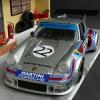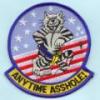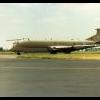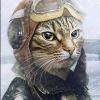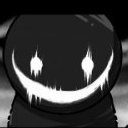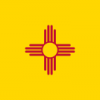Leaderboard
Popular Content
Showing content with the highest reputation on 05/06/16 in all areas
-
Whew, finally done. This is the Eduard BF-109 G-6 Late Profipack (new tool). This is a fantastic kit. The fit is perfect, and the detail in impressive. It took a while to build, mainly due to the complex camo, the weathering, and the fact that I painted the crosses instead of using the decals. I built it completely from the box. I highly recommend this kit. After a few day break, I'm going to get started on the AMK Mig-31. I probably won't do a work in progress thread on it, mainly since there are already numerous build threads on that kit. Thanks for all the help and comments to those of you that followed this on the work in progress thread. Enjoy!26 points
-
Hi All, Here are some pics from my latest build. Aftermarket seat and seatbelts, stars sprayed on using masks. Lovely kit, enjoyed the build. 21 points
-
Only the second build to cross the finish line this year, the Canberra is now done. Not one of my best builds, probably trying to rush to get it off the bench having stared at it for so long, but the paintwork is surprisingly complicated, not only with stripes, but with cut outs in the stripes for the codes, damn inconsiderate of the RAF to do this! At some point, I'd like to do a silver one as the Canberra has such graceful lines that are lost somewhat on this scheme. Built using the Airfix PR.9 (Edit: B(1).8!!!), CMK gear bay and flap sets, Aeroclub wheels and B.2 conversion and scratch built bomb bay with thanks to John (Canberra Kid) and his excellent website (http://ipmscanberrasig.webs.com/) for some great references. The decals were a mix of Airfix and Model decal for WH640. Despite my best efforts, there is still evidence of silvering on them.The intake FOD covers were Flightpath ones, although slightly too big they were filed down until they fitted in to the intakes as they should. You can see the build HERE The B.2 conversion comes with a resin canopy, but I used the Aeroclub vac form one instead. Despite sticking a ruddy great bolt up front, it is still a tail sitter, so had to use the supplied tail stand in the Airfix kit which I've photoshopped out of most of the photo's. Thanks for looking Cheers Neil20 points
-
Greetings mentors, Saw this, bought this, built this and love this! Just awful! I won't be using the cannons! Easy construction! I am definitely not a photographer! I made the mistake of taking pictures outside with the Horten on a sheet of paper. Sudden breeze later and looks like she will be in the repair shop for a few days. Bugger! Hugs'n'stuff, Jocko20 points
-
Jambo ! Just arrived from Nairobi this afternoon It's Roden's Super VC-10 but I didn't want to risk using the kit's decals, so I used Classic Airlines decals (CA144-385) instead. (I'm embarrassed to say that it's the first time I've actually tried Nick's decals, but sure won't be the last !) Standard 4 x 4 walkaround : and here it is with a neighbour from Ethiopia Thanks for taking the time to have a look. Time to head back to Africa for my next build. Regards mike19 points
-
I just finished Revell's Halifax b.III. Build and backstory here: http://www.britmodeller.com/forums/index.php?/topic/234998720-halifax-hx333-np-j-revell-172-the-groningen-connection-ft-percy-the-peguin/ The interior was improved with the Eduard Halifax b.II detail set, parts of WEM's Halifax details and scratch built components. The interior was painted with Mr Paint and Vallejo paints. The kit's nose gun was replaced by a gun from Aeroclub. I also used Aeroclub air intakes (originally designed for the Airfix kit) on top of each engine. The propellers of the kit were sanded into a more accurate shape. The landing gear bays were improved with Eduard parts and I added wires to the landing gear mechanism. The wheels are from AML because the kit wheels are slightly too small. I added the mud scrapers from the Eduard set. Late Halifaxes didn't have them but they were fitted to early production versions of the Mk.III so I added them. I drilled into the clear parts for the navigation lights and added green and red to simulate the coloured light bulb. Once the main components were assembled I primed the model with black Mr Surfacer 1500. I mixed various shades of dark gray from Mr. Paint to paint the underside. I also used Mr. Paint for the dark green and dark earth on top. Added some chipping with Runafang Steel with a small sponge. Oil stains were applied with black pastel chalk. Special thanks to everyone who supported me in the build and gave input to make the model as accurate as possible! As always, thanks for looking and comments & feedback is welcome of course.15 points
-
Italeri rebox of the 1/48 Hasegawa Typhoon. Replaced the exhausts with resin...and used a replacement 4-bladed resin prop hub with PropBlur, other than that the rest of the kit is OOB (well the pilot donated himself from the spare box). Questions...ask away. Cheers Collin14 points
-
Hi Folks I seem to be drawn to old kits and this is, I believe, from the late seventies,early eighties, just one of those kits. On the whole it went together OK, not brilliant but workable, the wing chord seemed a little large and a good supply of filler was needed in other areas. The only alteration carried out was to enclose the wheel bays with plasticard. I choose to discard the most of the kit decals and portray an F6A, XG223, ' 27' Tactical Weapons Unit, RAF Brawdy, I liked the yellow scheme, being a little more colourful and eye catching. The decals were sourced from four different sheets, including the few kit decals which I saved, all laying down very well. Paints used were Humbrol enamels, all normal there then ! The yellows in the pictures seem a little too vivid, they are actually down a few shades, also, something is missing, I think a blade antenna behind the cockpit, why do you only notice these things when you have uploaded the pictures ? Hope you like it13 points
-
Following on from my Airfix and Revell Albatroses (?) here are 3 more - prequels. These were me getting back to basics and building simple models OOB (except the Dr. I's decals). It was mainly to try my hand at rigging and trying to make simple models again. I am really enjoying this back to basics approach and it has got me making many more models.12 points
-
10 points
-
My first aircraft model! Not really fantastic, where should i improve? I found the decals really annoying to apply. Also, I din't applied a layer of gloss before the washes, I simply didn't know it was necessary for the correct use of the wash. The instrument panel. I am not an expert, any suggestion would be taked in account. Thanks for viewing and tally ho!10 points
-
The West By Gawd Virginian fow by Bob ( Punchy ) Powell of the 352nd FG. 1/48 Tamiya P-51B . Painted with Tamiya and AK Etreme Metal paints. Weathere with MIG wash Cheers Brian10 points
-
evening all.. so I got stuck in to the rudder after much banging around trying to make the right one (thanks all ).. ..first I transferred the plan onto the brass core, cut it out and used it to score where all the features are.. I also scaled the monforton plan for the pointy rudder so I could nick the cross section profile for the width and shape (I am dangerously assuming it to be roughly the same...).. ..cut out the profiles in brass so I don't sand through them and got some bar stock to make the rounded leading edge.. ..assembled these and you can see how the brass cross section will define the shape.. ..there is some quite complex structure behind the leading edge so I stuck two bits of bar stock together with a couple of light spots of CA so I could shape both at the same time.. ..cemented those in place and built up the counterweight at the top and the thin edge liner too.. I also cut where the trim tab is so I can make it as part of the rudder and break it out at the end (he says hopefully..) ..I pondered how best to do the ribs and decided on coffee stirrers as they are wood and should bond well to the solartex I want to cover the rudder in,, cut them to shape and added both sides.. ..and all ready to cover with solartex. This is stuff used for R/C aircraft and is heat activated with an iron to shrink and stick to the structure. I tried cutting out the shapes as seen here but it shrinks too much for that. I also had to add more wood around the trim tabs to close them off and get a good bond all round. It took 6 - 8 attempts as it's not easy when the structure is this small, but after getting the edges stuck and working to the middle I ended up ok in the end... ..and the mainly complete rudder.. I added the tail light but am not very happy it is the right shape... ..the material effect and very slight sag between ribs is good in real life, though difficult to catch in a photo ..need to work out how to detail it with rib tapes and the bumpiness you see where the tape is over the screws fixing the linen to the ribs.. ..thats enough for today.. TTFN Peter8 points
-
This morning I got the preshading done: This was my masking arrangement for the white tail. I've also replaced the masking on the engines with blobs of White Tack as the discs of tape kept falling off: Here's how the white came out (its just Alclad white primer): For masking the tail I needed a large arc of tape: Here's the masking for the blue undersides. The underneath of the tail planes also need to be blue but I've decided to do them separately so I can use the tail as a handle: Here's how the RLM 76 came out, not much evidence of my preshading but that always seems to happen to me: That's not a bad place to stop for the day and let the blue cure overnight. Bye for now, Nigel7 points
-
SPITFIRE F.24 VN496 Hong Kong 1950 The last off the line. OOB Airfix 1/72 Spitfire 22 with Freightdog Spitfire 24 conversion set.7 points
-
okey dokey.... grass cut, storm a comin' ... time to head indoors. Continuing with the brass theme that seems to have taken on a mind of it's own, I got the control column soldered up, and even managed to get the small button part soldered on their as well. I chickened out trying to solder the brake lever (not shown in this photo) and just ca'd that in place on the reverse side. With only the instrument panel to use as a reference for dimensions, I think it turned out not too bad. Frequent and mucho repetitive dry fitting is essential when scratch building this much of the kit. Since I have removed all interior reference points, I have nothing to go by other than a few photo's. The interior framework was bugging me - I knew I had followed the etch pretty closely for a pattern - but you know how these things often turn out. So, I added a crossbar under where the seat will be located, using the control column base fitting as a reference. Just one cross bar was needed - that was strong enough to hold it together, and weak enough to tweak it if I needed to. Looks okay so far.... Then with the fuselage closed up, it all seemed to fit and things were pretty close to where they needed to be. Happy that the spacing was correct, I leveled the rudder pedals and soldered them in place too. Going back to the B3 sheets, I found the central support structure that holds the wings 'n' stuff together. That was easily folded up... but looks a bit flat doesn't it ? Now, carefully following my current plan of having no plan whatsoever, I decided that since I had made all that other stuff out of brass rod, then I might as well make this out of brass rod as well... it can't be that difficult can it ??? So, out came the brass rod again and back to my patented pattern solderererer with lots of tape (and hope!) A little while later I had this. The two legs on the right hand side are deliberately inset form the edge so the legs on the sides don't interfere with them when folded upright. I used tube slid over the rod for the horizontal supports as you can see in photo's that these are much larger than the surrounding supports. However, after messing about with it for a while, I deiced to that I didn't like the flat etch at all and peeled it off. Then I had to figure out a way to hold it in position while soldering and ended up with this.... Again, another dry fit to see how it all goes together. That central framework is going to take a good bit of clean up, however, once it's all painted and I start hanging cables and wotnot from it, I'm hoping it won't look too bad. Oh crap.... Looking at that photo above, I just realized that I may have part of the bracing back to front I must go and check my references.... Oh well, it should be easy enough to rejig :pray: Look ! I even got it level too ! So, while go and do that (after I've gone and got brake pads for the car ) I'll leave you with another couple of the dry-fit photo's. The seat in place - sitting on a big blob of blue-tac ... and almost a drivers view with the instrument panel in it's general location. With all my messing about with this kit, I now need to figure out how to mount the seat and the instrument panel though I'm sure I'll think of something fairly easily.7 points
-
Here's my take on the T3 camper. It's what may or may not the campsites of Europe would have looked like in 1979 if GB and its' allies had not prevailed in WWII! Was once a proud owner of a T2 bay window Westfalia that took myself and the missus around Scotland. Anyone know of a T2 kit out there? Thanks to Ronald ''Dillon'' Watkinson my work colleague and also my friend for the sun visor and signage. Thanks for looking, regards Siffo.6 points
-
My final contribution to this GB AZ 1/72 Spitfire LFIXc MJ532 601Sqn Italy 1944, xtracrylix paints, xtradecal decals http://www.britmodeller.com/forums/index.php?/topic/234998562-3-finished-pbs-mkix-spitfires/6 points
-
Seafire LIIc MB218. 809 Squadron, FAA, HMS Unicorn, Operation Avalanche, Salerno, 1943 Sword kit, with modified clipped wings and four blade propeller, option in the kit. Brush painted with mainly Xtracrylix paints, Revell Aqua black for the prop blades and Akan old rubber for the tyres. OOB apart from Tamiya tape seat belts. Lovely but definitely meaner looking than your average Spit6 points
-
5/6 update: Some colour, not the camo coat but Vallejo acrylic ground, Desert Tan. The frames and supports for the skirts are in place, fit was excellent. Work started on the suspension of the Beast6 points
-
I have had a bit of a blitz on this Corsair over the last few days to try and get it over the finish line. It was started for the recently finished F4U Corsair GB but unfortunately the build stalled and I missed the deadline. I have used a True Details cockpit (not that you can see much of it) and Microscale decals. The decals are for a Guadalcanal based F-4U1 from VMF-213 in 1943. I have used the build as a test bed for a couple of weathering processes I have not used before. The chipping on the wing roots and walkways was done using Maskol and the mottling effect on the paint was done with salt. Overall I am very happy with the outcome and will be using both techniques again for future builds.6 points
-
A little more progress on the cockpit today guys and gals... I've added the scale 2ft widening strip down the centre of the cockpit roof from plastic card, and also scratch-built the forward frames for the glazing from Evergreen strip: Now all that's needed is to refill a small blemish or two and prime it up to see how it looks. Until next time, Tom6 points
-
Hello fellow modelers. I would like to introduce my latest finished model. The model without the accessories, I only aircraft rivet. Perhaps you will like it More photos in the spoiler5 points
-
After 6 months of work, this monster is finally done! Had a lot of problems closing the fuselage halves, but is was worht all the effort. Dave5 points
-
Finished today, marked up as 8th Army, 56th Div, Italy '44 ATB Sean5 points
-
Cheers, Neil. Still a looonnnnnggggg way to go yet, though. Today I have completed the cockpit roof area - it's had a spray of filler-primer which has hidden the multitude of sins below: And with some fine tweaking of the cockpit bulkhead... The section fits a treat... ...if you ignore the big gaps that is. But they'll disappear when it's fitted properly, he says hopefully. I'm pleased to have got this part out of the way - it was worrying me as getting the cockpit right is critical in getting the character of the real aircraft. I'm confident that when I've added the observer's glazing atop the nose section it'll look acceptable. The real fun will be the glazing itself, but 'Tigger' Wilkes has come to the rescue and supplied me with three of his canopies for his 1/32nd Lancaster which I can cut up to drop the glass areas in later in the build. Until next time, Tom5 points
-
Airfix "Classic" Sea King - painted up as "Old 66" with (some) aftermarket decals and some enhancements and extensions. Build thread is here. Thanks for looking, Adrian5 points
-
Well, little progress on the Fw190, as I've been working hard on the kitchen before Mrs. P returns next Saturday. This panoramic photo shows you sort of what it looks like if you were to spatchcock my house like a grilled chicken. Tremble at the non-euclidean horror of it!5 points
-
Thank you Jason. The other day took care of some final details, followed with a primer coat. Went ahead and attached the wind screen, but scale wise is fairly thick. The exterior side was sanded down, but one can cheat a bit and sand the top edges slightly more, sort of like a bevel, to give a thinner look. Primer on, and gaps pretty much gone at the base of the tail. I forgot to take a progress photo, but I built up the spine a bit to represent framework where the fuselage seam was. This was done with some thin plastic sheet, after attached was further sanded down and shaped. Mind you, I 'm not completely sure this detail is correct, perhaps it should have remained flat? Now back to the engine ... After cutting off the kit's push rods, drilled some location holes in their place. To aid in lining up the replacement stainless steel wire, some hollow brass rods were doubled up, and super glued to each other. Working at two points at a time, once glued in place, these 'bases' for the push rods are trimmed. A little filing to touch up, and a sewing need is required to re-open the hole in the brass. Engine where it currently stands, painted up, and two pairs of push rods in place. Unfortunately the details do not match photos of actual Bristol Jupiter VI. The circumference of the engine is too large in front of the cylinders, and the push rods should actually sit lower by a good scale mm. There is also detail to the framework here that should be simplified. So the above is just an FYI, as I won't be fixing this since the parts are all glued and painted, plus much of the corrections would be obscured by the nose plate armour. regards, Jack5 points
-
HI, here are now the gallery pics of my latest project. Another big thanks to Torsten who did an fabulous job with the design and the print of an unique car. That is it. I hope to get lots of comments from you. regards Christian4 points
-
Back to props again today. I picked the Hampden up for a reasonable £15 last year at Telford and been looking forwards to starting the Whitley after the great feedback its had if somewhat unconventional kit design. The Hampden is a bit of a dog I believe, so fore-warned is fore-armed. I've chopped the front from the upper forwards nose transparency and the Falcon vac front section is being used instead. A wedge is needed to address alignment of the nose area at the op, but this looks to be fairly straight forwards. I'll be having the canopy open which will simplify things, again planning to use the Falcon part for the sliding canopy. Here is a dry fit of the nose parts, so far, looking good... Not finalised what schemes I'll be doing yet, but quite fancy the early scheme on the Whitley with the lower demarcation line with only black undersides.4 points
-
Hi everyone, despite the fact that the bench is liable to collapse under the weight of stalled/unfinished/abandon builds, I couldn't resist this one..... ....efforts to postpone this until the MTO GB have failed! Pleasantly surprised to find this all over the sprues.... ...but it seems like something of an oversight based on the effort that Revell went to when removing all mention of Matchbox after acquiring those toolings. I will be finishing it in this option... ....which includes an application of, I assume, temporary white over large portions of the upper surface - looks like fun! Craig4 points
-
It was time to see just how much would be visible when this is all together. It doesn't look too bad, though on the 1:1 the center portion between the driver and passenger doesn't appear to be blocked off the way the etch has it. However it looks as though at least I'll be able to see some of the work. Same on the port side. Neither the kit, nor the etch provide the horizontal "shelf around the pilots area - you can see it there for the gunner/navigators position. I may have a go at making my own later. I figured it was about time to get moving on this and wanted to throw some paint on it to see how it looked, but first, I needed to add some more cross bracing - here I have added a section of rod and some brass angle, just forward of the navigators position. Browsing through the Haynes manual gave me the idea to add these - there's also an inverted "V" of rod to be added, then the fuel tank will sit just forward of that. Before priming the inside of the kit, I wanted to get the steps cut out - initially I used the kit position *then* checked my references - of course, it was in the wrong position, so I recut another using the same heated tube that I used previously. This step also appears to be a bit larger (in height) than the others so when the hot tube was in position I just moved it upwards slightly against the fuselage to create the elongated step. The first one should be easy enough to fill in. I added some boxes and whatnot to the inside of the fuselage to busy it up a tad and also to hide the steps that I just cut into the sides. (forgot to take any photo's) Then it was airbrush out and I began squirting primer at anything that didn't move... even doing the kits original engine just in case I decide to use any of it later. The undercarriage needs a fair bit of work to bring it up to scratch but the primer certainly helps to see what work is needed. I added some bits of styrene tube here and there to give the etch a more three dimensional appearance. Still a ways to go here but I'm liking the effect I'm beginning to achieve. Picking out the details in paint is going to be a complete nightmare though My last bodged bit for the weekend was a go at the fuel tank. I started with the kit part - which was just completely square. I sanded the sides to make it look something like the references in the photo's. My intention was to get the general shape with the kit part, then sheet it in styrene. ... but I didn't get too far before I thought I may as well try brass... heck... everything else so far has been in brass... why not? So I cut a strip of 0.005" brass sheet, folded it up, then cut some styrene side panels - cos they will definitely never be seen. styrene shoved in place and held with liquid nails - I am starting to like the liquid nails adhesive. It seems to have decent strength, and you have time to position things before it starts going off. Of course, you really have to leave it overnight to get the best cure strength but that's a small price to pay when measured against all the frustration encountered by etch and cyano glue. Then last dry fit for the weekend. There's still a few straps to be added to the fuel tank, but I'm happy with it so far. Though it will never be seen unless I cut out that center section of the coaming you can see back up in the first & second photo's of this post.4 points
-
Safety first! Ah, but are they prepared to make wild promises and stay until the job's done? Even if it took, say, however long is required to achieve legal residency in the UK, I would work at it.4 points
-
A couple of hours done today and the kit has fallen together. Wheels took the longest but once attached it was plain sailing from there. The upper and lower hull was buried under some books to get a good join. Wheels and hull: Turret and cannon: Been a joy to build and brought back some good memories! Amazingly, there's not much more to add to the hull or turret before it's ready for painting! I know it can be spruced up with aftermarket, and to be honest some areas could do with it such as the grilles etc, but I think that takes the fun out of these old kits. Anyway more to come. Dave4 points
-
Snap - I am building this as we speak, I got the 26Decals though - before I saw Classic-Airlines one. Love Nicks' work! Beautiful work Mike, ( especially all that pitot tube action - nice details from Roden ), and not to try and hijack the tread - the build I finished this morning. Cheers, Mike4 points
-
Thanks, For ten years, I had a shipping column in a professional maritime publication. Here is the entire article for Newton Hall! Bob NEWTON HALL GENERAL DETAILS: Year built: 1905 Original name: Drumgeith Built by: J. Priestman & Co. Sunderland Owners: Tyneside Line Type: Steam tramp Tonnage: 3,930 gross Dimensions: Length 355 ft Breadth 48 ft Depth 26ft 2 in The NEWTON HALL was typical of the steam tramp ships which were produced in their hundreds in the early years of the twentieth century. She was built as the DRUMGEITH for R.A. & J.H. Mudie of Dundee. The only reason that I did not build the model as the DRUMGEITH was the fact that I could not find the correct funnel colours for R.A. & J.H. Mudie! The single screw ship was driven by a triple-expansion steam engine with cylinders of 25”, 42” and 68” respectively each with a stroke of 48”. Steam was provided by three coal-fired Scotch boilers each 14 feet three inches by ten feet. The steam pressure was 180 lb. The horsepower of the engine was listed as 373. Her service speed was 12.5 knots. In 1905, memories of the days of sail had not quite faded out. The designers saw fit to provide the ship with two large jibs set from the foremast to the stem bar and the forecastle head. A large jib-headed (Bermuda) sail was set aft of the foremast. The mainmast carried a large staysail extending forward to the after end of the engineer’s accommodation and a jib-headed sail on the after side of the mast. Although the accommodation was very spartan, it was better than most ships of that time. The bulk of the crew were not housed in the forecastle, but down aft in the raised poop. The port side of the poop housed the 22 fireman in upper and lower berths. Lockers and a single mess table were provided. A small single berth cabin was also provided at the forward part of the firemen’s accommodation. The starboard side housed 22 seamen and again, there was a small single berth cabin at the forward end of this section. These two single berths were possibly for the bosun and carpenter. Under the break of the forecastle head were two four berth cabins, one on either side. The port side one housed the quartermasters and the starboard one the cook’s boys. The officers lived ‘midships. The captain had a reasonably large cabin on the starboard side of the lower bridge deck. This consisted of a sleeping cabin, bathroom and small lobby leading out to the centrally placed dining saloon. The chief officer was situated on the port side forward end of this accommodation block and a smaller cabin for the second officer was situated next door. Immediately aft of the captain, mates and saloon, a cross-alley ran the full width of the accommodation. On the starboard side, aft of this alleyway was a tiny two berth cabin, listed as “Steward.” In all likelihood, the steward shared this cabin with the cook. On the other side, was another tiny single berth cabin for the third officer. Two more cabins were centrally placed between the third officer and steward/cook. One of these was most likely a pantry and the other probably a storeroom. The remaining officers lived in the accommodation block aft of the funnel casing. At the port side forward end was the chief engineer in a fairly large cabin, aft of this was the engineer’s bathroom, a short passageway and finally the fourth engineer. On the starboard side, the second engineer’s cabin was at the forward end, followed by the third engineer, a short passageway and finally, the engineer’s messroom. Between the fourth engineer and the messroom was a spare cabin, a storeroom and the pantry. A total complement of 64 men on a 3,930-ton ship seems incredible in these days of reduced manning, but the wage bills were no doubt minimal when the ship was built On the bridge deck itself, the helmsman was protected from the weather by an enclosed wheelhouse, aft of which was the chartroom. A short roof extended forward from the top of the wheelhouse to the front of the bridge. This gave some sort of weather protection to the officer- of-the watch, but the wings and sides were open to the elements. The anchor windlass appears to be hand-operated as it is fitted with handles on either side, although it is possible that steam power could also be used. The four large cargo hatches on the fore and maindecks were served by steam winches operating eight derricks. The small hatch on the ‘midship island was served by a single steam winch operating two small derricks fitted on two very small and flimsy-looking samson posts. Three bunkering hatches were provided, one on top of the engine casing and one on either side. The ship had a long life with a number of name changes. In 1915, she was sold to Brocklebank’s and became the MATRA. She came through the Great War unscathed and in 1921, became the NEWTON HALL of Tyneside Line. It is unlikely that she was fitted with wireless when new, but by 1921, the NEWTON HALL is listed as having both wireless and electric light. Six years later, she was sold to the Byron S.S. Co. and became MAID OF LEMNOS. In 1931, she was sold to Far Eastern buyers and became THERESE MOLLER. On the outbreak of World War II, the ship was 34-years-old and with her slow speed, the odds for survival did not seem very high. Nevertheless, the stout-old ship once again came through the conflict, thus putting ten years of war behind her. In 1946 she changed hands again to become the Chinese owned CHI HING. Two years later, she took her final name of TIEN PING. She sailed under this name for six years and was finally broken up in 1954 at the grand old age of 49 years. It would be interesting to discover what her manning level was in 1954 and whether she had been converted from coal-firing to oil. The NEWTON HALL was, to outward appearances, a run-of-the-mill tramp steamer, but she was undoubtedly a very lucky ship and a credit to her builders, J. Priestman of Sunderland, who produced such a fine job almost a century ago.4 points
-
Whirlybird kit of the Sikorsky MH-3E "Pave Pig" as operated by 71st SOS deployed to King Fahd airport in Saudi Arabia during Op Desert Storm. For build thread see here. http://www.britmodeller.com/forums/index.php?/topic/234997078-sikorsky-mh-3e-pave-pig/4 points
-
Camouflage suited to fording rivers of custard Andy Always start German yellow way too light to avoid a dark brown colour after weathering. I have made that mistake several times before The E-10 is too dark, the Jagdpanther looks better:4 points
-
4 points
-
not using many of the PE for the fuselage halfs, found some Zvezda pieces on the sprue not in the instruction and used them instead finding those small PE pieces4 points
-
4 points
-
Thanks (I think!) for the encouragement, Cliff! After a bit of measurin' and cipherin', I determined that it would be possible to cut the outer wings off of the ZTS upper wing section to a required centresection width across the wing roots of about 16.5mm in order to adapt the Amodel wings to the ZTS fuselage. As it happens, there are very faint panel lines which define the edges of the ZTS wing roots, and these are very close to the required dimension with a little bit of fat included for final sanding to the exact size on assembly. So, having lost all will to resist, out came the Dymo tape, the P-Cutter, and the razor saw, and here's the result, taped together for picture-taking: As you can see, there's a slight chord-length mismatch at the trailing edge (that 2mm again), but this will be relatively easy to correct by reshaping . This might actually work... John4 points
-
Well There's colour... Not alas the Tamiya Dark Earth I have somewhere but that eludes my mk1 search engines, my eyeballs But never mind, I'll find it tomorrow Now I have used Humbrubbish instead, dammit "airbrush to unclog stations number one!" I know not pretty but I need to get on with this Hansom to finish too and a Frog Buccaneer to Navalise just down the line As always when I unmask there are 'issues' Here we have the paint rudely ripped away from the underwing tank access panel, obviously painting Solartrim is fraught with adhesion risks And that little knobbly bit of plastic used to be one of my hand carved Fowler flap hinges Humbrol's very decent tube glue will 'perform' on that Some of the other usual 'paint lifting in a few places' issues which will be brush anointed soon and odd bits of colour divergence from the 'brush' clogging need to be addressed but the fuselage now unmasked reveals almost exactly what I needed/wanted Tiny brush adjustments will do the trick here Tiny bits is all I'll do here I am quite happy with the new canopy, shed effect Something of an improvement and a pity Airfix didn't like their own moulding enough to amend the stupid roof issue themselves She is a little beaut with a few bits done to her So there's to be more Later... Bad news a few more lost pictures but there are still enough for a narrative Sorry folks4 points
-
Thanks guys I'm going to call the hardstanding and revetment wall done. I could keep on weathering them, but I don't want the focus of the diorama to be the base, and anyway, most of it will be obscured by the X-Wing. I might tweak the weathering at the end if it needs it, but I'm going to get started on the landscaping at the back now. In the end, I didn't use any oils on the base, just enamel washes. Mainly AMMO dark green grey PLW for the staining on the concrete, and AMMO streaking grime for the dirt and grime on the wall, and some of the smaller stains and patches on the ground. There's also a bit of chipping on the hatch on the wall with a pencil Andy4 points
-
just completed, put away several times, for long periods of time. paint issues being the biggest stumbling block. completed using decanted halfords paint and airbrushed. now moving over to zero, as i find it more consistent to spray. [/url]DSCN4856 by rgriffs, on Flickr">http://DSCN4856 by rgriffs, on Flickr DSCN4855 by rgriffs, on Flickr DSCN4851 by rgriffs, on Flickr3 points
-
3 points
-
Fun with pigments. I mix a little black and brown together to get a grimey colour and start applying it to panel lines, letting it dry then dragging it back in the airflow's direction.3 points
-
I have to say, I am struggling with this build, actually more like working out where things go in the cockpit This kit has some of the worst instruction I ever seen - it looks like the instruction was drawn before the kit parts had been made. As an example. PE part 5 has a fold-up shown in the front, but the actual fold-up is on the back And where exactly does it go on the wings ??? But I did glue a resin part to the wing and the fit was reasonable. But still have to do a bit of sanding. Cheers, Peter3 points
-
These were made for the Group Build honouring Edgar Brooks, he will be missed. The build thread is here. The first is a Spitfire 21, made from the 1/72 Airfix Mk 22 kit with the spine and tail assembly from the Special Hobby Mk 21. Next up is a Spitfire XII from the 1/72 CMR resin kit. The third is a 1/72 Sword Spitfire V made into another 41 Sqn Mk XII using the Brigade conversion set. And all three together.3 points
This leaderboard is set to London/GMT+01:00





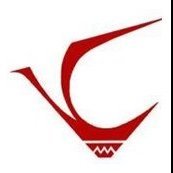
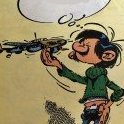

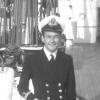
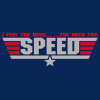
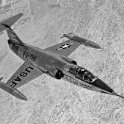
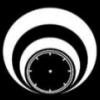
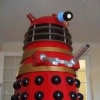
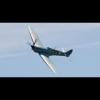

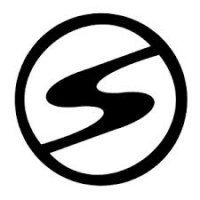
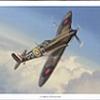
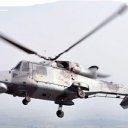

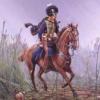


.thumb.jpg.3c5b41eb004e624ff9bdf837868ecbb6.jpg)



